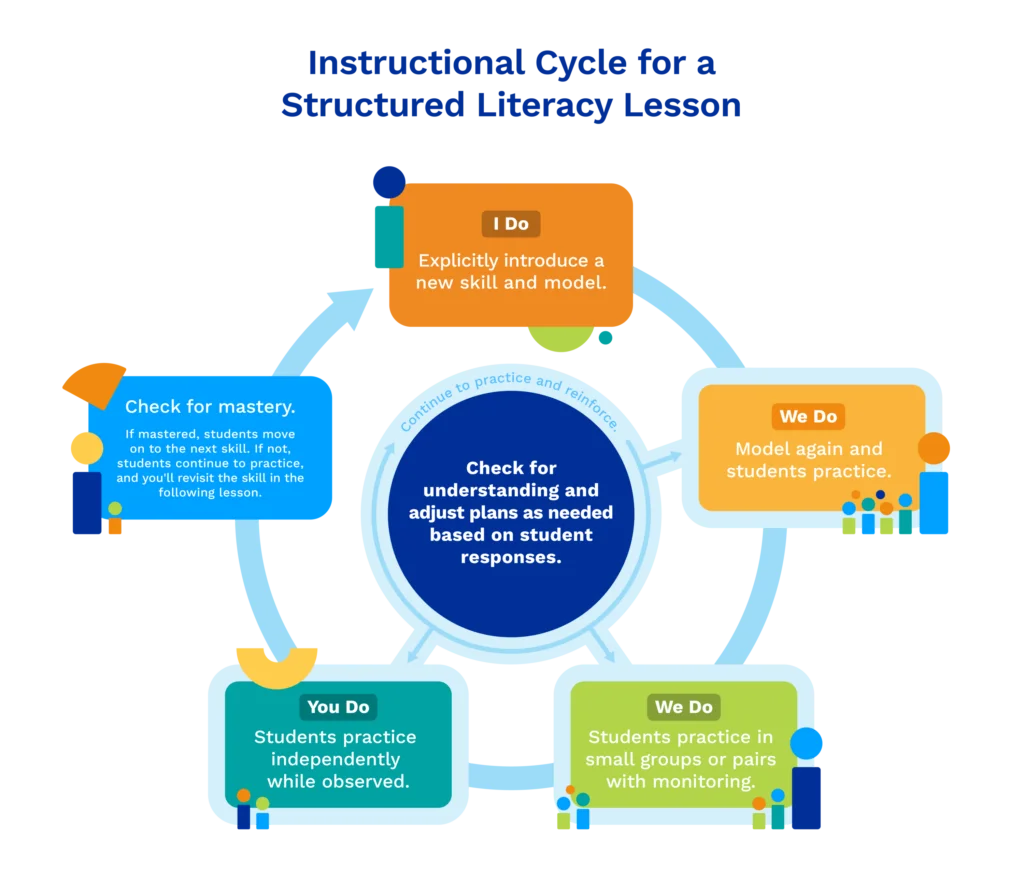- Features of Structured Literacy
What Is Structured Literacy?
The research-based approach ensures students get the skills they need with no gaps.
Liana Loewus


Instructional Cycle for a Structured Literacy Lesson
Print this illustration of what the instructional cycle looks like during a single lesson.
Print this illustration of what the instructional cycle looks like during a single lesson.
